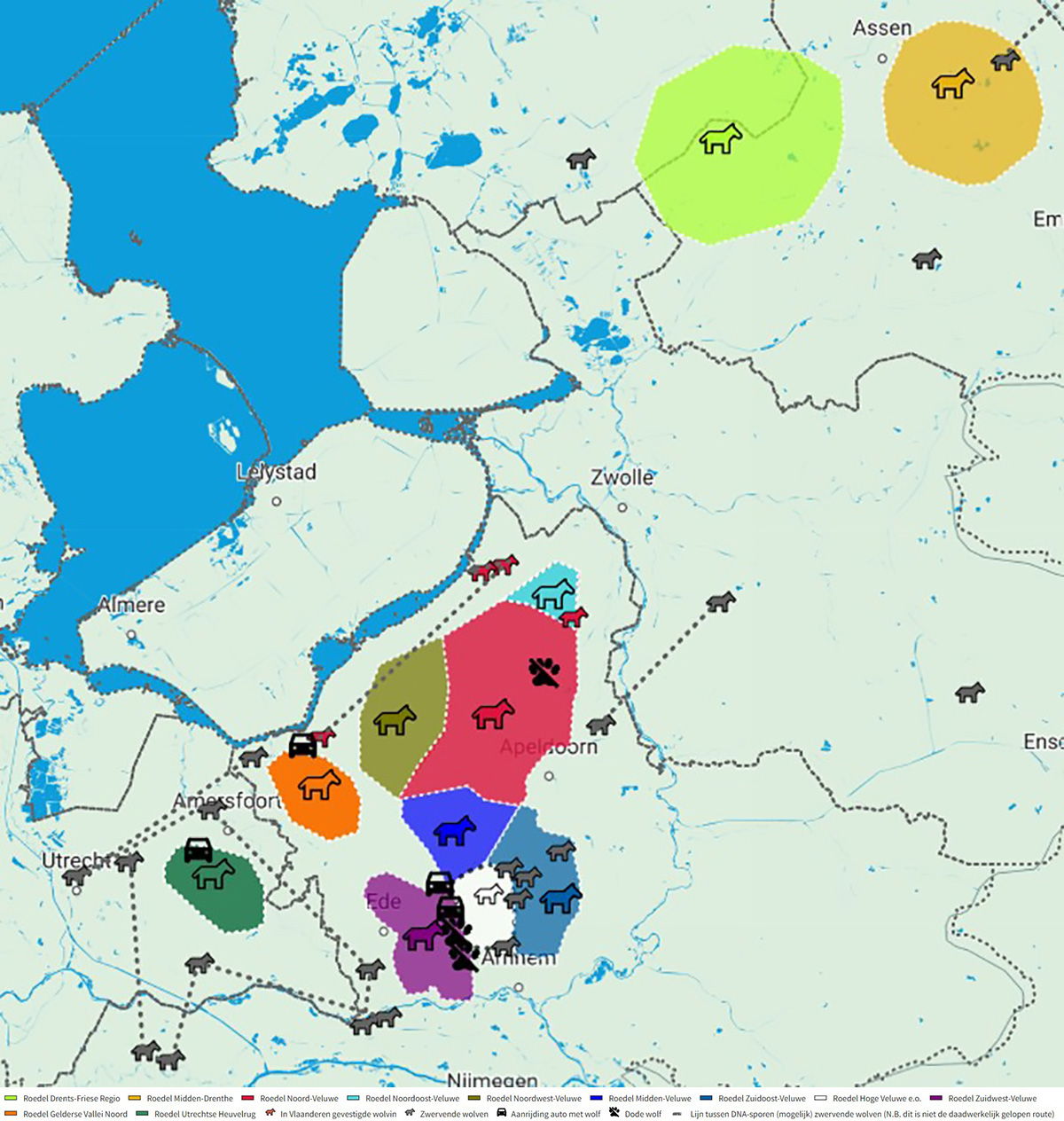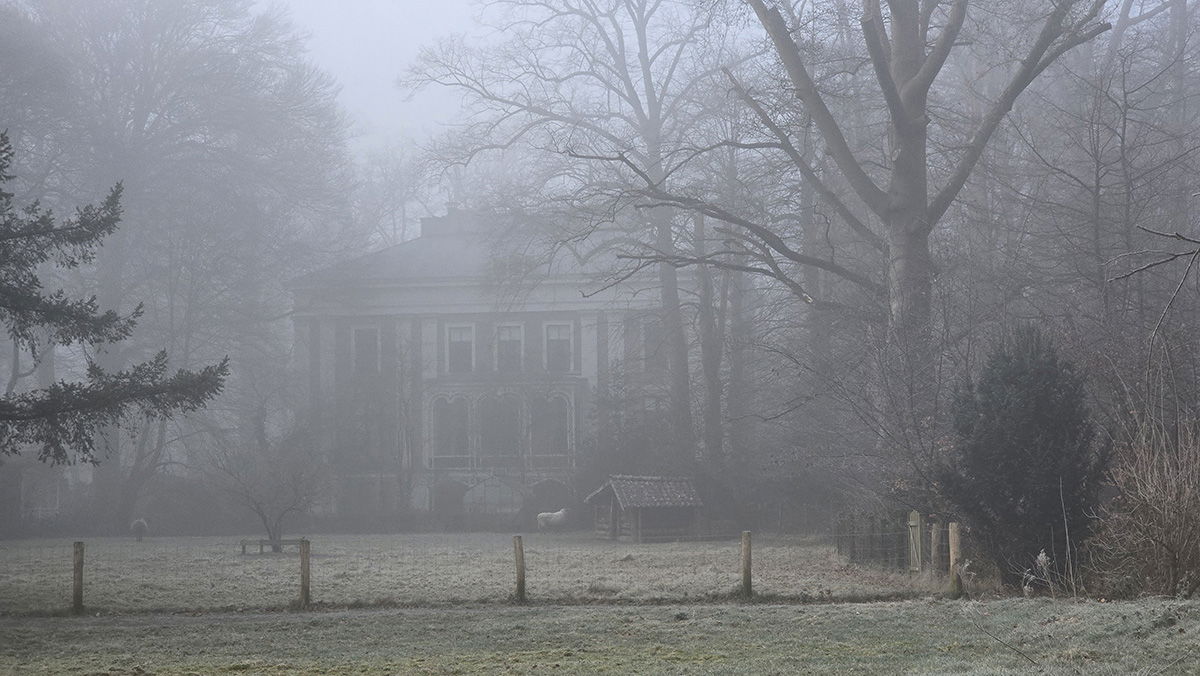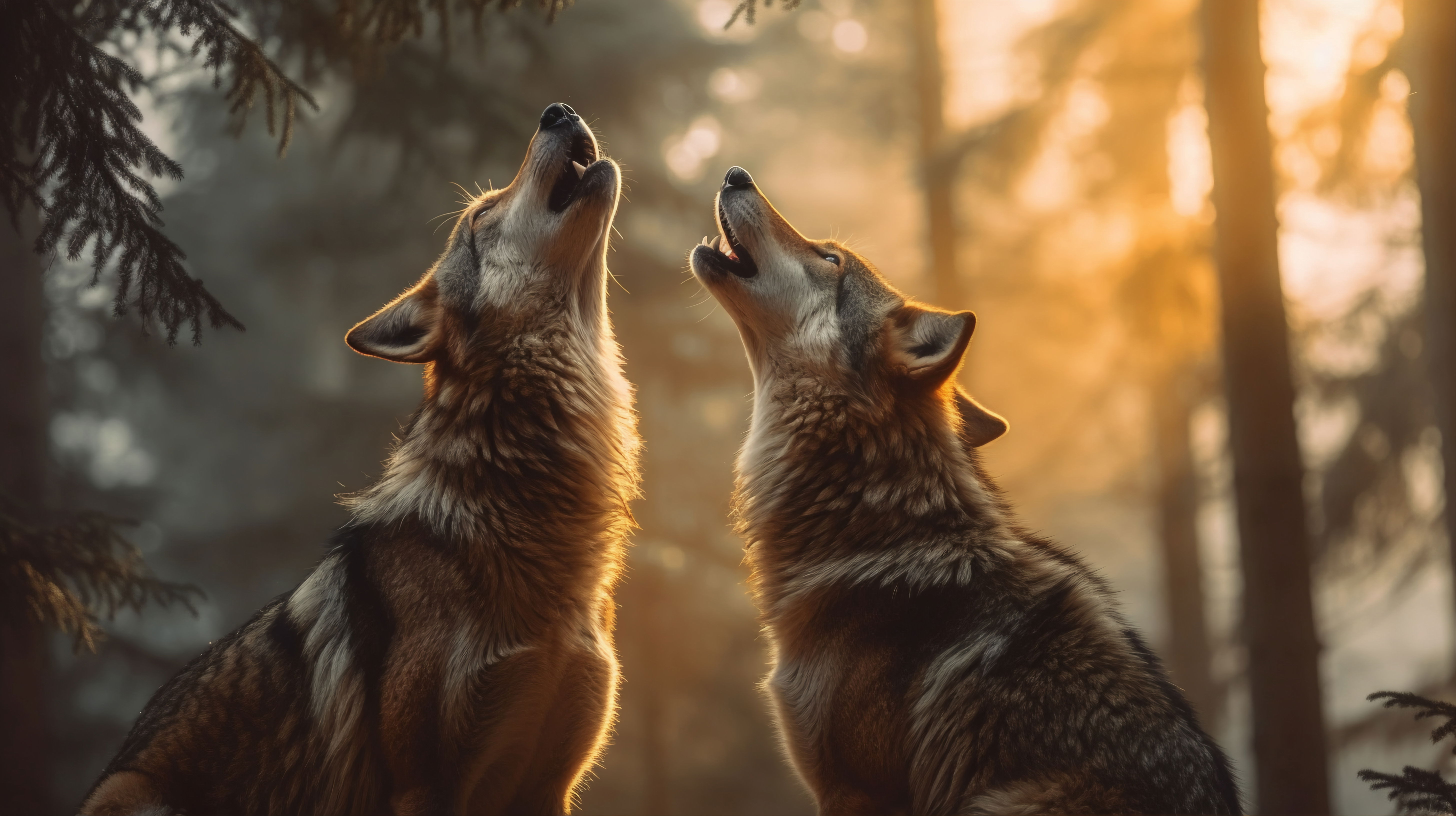Wolfpack Zeist
Image by freepik.
I am writing this story in response to the increase in the number of wolf packs and thus also the number of attacks on flocks of sheep and other livestock, but also as a supplement to “Wolf Talk” that I wrote in 2024 and that you can read at https://www.als-bomen-en-stenen-konden-praten.com/wandelverhalen-meer/wolvenpraat-in-zeist
These attacks remind me of the Second World War, when the U-boat fleet (unterwasserboot) of the German Kriegsmarine used the Wolfsrudeltaktik (English: Wolfpack) in attacks on merchant convoys. U-boats searched for convoys individually and when they found a convoy they passed on the coordinates to other submarines using Morse code. The coordinates were first encoded using the Enigma code (Greek for riddle) in an electromechanical coding machine in different letter combinations than the original. The recipients of the message then translated them using an identical coding machine. When night fell, several U-boats attacked the enemy simultaneously from different positions and shot the enemy convoy to pieces. A Wolfpack could consist of up to 26 U-boats.
Until 1943, this tactic was very effective and the range of the U-boats extended far into the Atlantic Ocean. Contrary to what the British intelligence service claimed, it was partly thanks to Marian Adam Rejewski, who worked for the Polish intelligence service, that the Enigma codes were broken. This enabled the Allies to detect and eliminate the U-boats.
During the Second World War, 4,870 U-boats sank approximately 3,000 ships, killing 35,000 sailors (95% merchant navy). Between 1939 and 1945, approximately 768 U-boats were sunk, killing 40,000 crew members.
Inside Das Boot
The crew of over 45 worked in shifts for months and shared a bed with two other people in a damp and filthy space no more than 50 metres long and 3 metres wide. There was almost always noise from the diesel or electric engines and because the heat from these engines could not escape, temperatures sometimes rose to over 50 degrees Celsius. The air was permeated with the smell of unwashed, unshaven, sweat-smelling crew, but also of oil, mouldy clothes and exhaust fumes. The ceiling was covered with food that, apart from the pickled meat, quickly went mouldy due to the combination of heat and moisture. Towards the end of a voyage, the crew lived on tinned fish and beer and many a crew member became completely psychologically disturbed due to the lack of daylight, cramped space, poor hygiene and lack of privacy. You will not find me on a submarine. You would already become claustrophobic just reading the above.
Back to the wolf packs in the Netherlands
As I wrote in “Wolvenpraat”, the Eurasian wolf (Canis lupus lupus) returned to the Netherlands in 2015. At the beginning of 2019, it settled with a partner on the Northern Veluwe. In six years, at least 32 cubs were born in this first wolf area in the Netherlands. Six offspring have found their own territory in the Netherlands, five roam the Netherlands or have moved abroad and eleven have died.

Reporting point “BIJ12” counted eleven wolf packs in the Netherlands on February 13, 2025. Since the registration of wolves started in 2015, 158 different wolves have been identified, of which 52 have died. The majority died in traffic? Of the registered wolves, approximately two out of three are males. Apart from nine wandering wolves without a pack and habitat, there is now an average of eight wolves per pack. The figures also show that after the cubs born in 2019 founded their own pack in 2022, the number of packs increased by five packs per year. The actual number of wolves will in all probability be higher than the registered number. At least one of the eleven packs resides around the Den Treek estate and in all and unregistered probability a second at the Kozakkenput in Austerlitz. The wolf from the Den Treek pack descends from the Noord-Veluwe pack and had a litter of five cubs (4 males and 1 female) in 2024 together with the female wolf from the Midden-Veluwe pack. One male from this litter was run over near Leersum on 9 November 2024.
A wolf pack
A healthy wolf family consists of several generations living together. Usually all wolves are related to each other: two parent animals, the cubs that were born the year before and a few young adults that have ‘stayed around’ until they start their own family. The young adults help keep the family going by going hunting and looking after the youngest brothers and sisters. At the age of about 3 years, wolves have their first litter with a partner from an unrelated tribe with whom they establish a new territory. They do this far away from their parent animals. At 10 to 11 years, the wolf’s fertile period is over and he passes the torch to the offspring. A retired female transfers her territory to a daughter or sister.
Facts about wolves
Wolves are very smart and intelligent hunters who can work well together and work strategically to pursue and catch their prey. The wolf that lives in our country can live for 15-20 years. The females weigh 18-50 kg and are smaller than the males, which weigh 20-80 kg. The wolf can grow to a length of 80-160 cm from head to tail and 30-50 cm longer with the tail. The shoulder/withers height is 60-80 cm. An adult wolf has 42 teeth with canines up to 2.5 cm long, does not chew its prey but tears the meat into chunks and swallows it like that. The wolf is one of the fastest land animals in the world and can travel up to 60 km per night at a trot speed of 12-16 km per hour. When running hard after their prey, they reach a top speed of up to 60 km per hour (albeit for a short time). The wolf can hear tones up to 40 kHz, tones that are too high for human hearing and which allows it to hear a branch snapping from 3 km away. Against the wind it can smell other animals that are 300 meters away. It can also see very well in the dark, which enables it to go hunting in the evening. The wolf has a visual angle of 250° (compared to 180° for humans).
Wolfpack
As the number of wolves, packs and pack sizes increase, so do organized “wolfpack” attacks. When night falls, multiple wolves attack from different positions at the same time and slaughter the entire livestock. In 2023, the number of wolf attacks almost doubled from 426 to 770 in 2024 and you can see that as the packs increase and become larger, the number of slaughters increases. The 11 packs in the Netherlands claim seven times more victims than the 209 packs in Germany. Could that have something to do with the population density in Germany of 237 inhabitants per square kilometer compared to 511 in the Netherlands?
In 2023, more than 60 sheep were bitten to death in Zeist and the surrounding area, in 2024 that number had already risen to more than 200. If you look at the incident figures from BIJ12, you will see that more and more large-scale slaughters are taking place. Apparently, they do not only kill to eat, but they murder everything they can see.

On the Heidestein estate, the flock of sheep was halved in 2024 and the Utrechts Landschap subsequently sold the remaining sheep. As a result, the heathlands are no longer grazed and the annual Nativity scene on the Heidestein estate, which has been alive since time immemorial, is also defunct. The sheep in Zeist are now almost gone and at the moment only two sheep graze behind Buitenplaats Molenbosch. A white mother with a black daughter who miraculously are still alive behind a 1-metre-high wire mesh fence. I say “miraculously” because the wolf was seen a few hundred metres further on the Arnhemse Bovenweg in front of Kasteel Kerckebosch in mid-2024.
Imagine being a farmer
A total of 62 sheep were recently bitten to death in two places in Friesland and on 01-03-2025 I read the article below in the Algemeen Dagblad: “Farmer loses another 32 sheep”.
Last weekend a wolf struck 51 times at a sheep farmer and last night an attack resulted in another 32 dead sheep. ‘It’s a battlefield. Two were eaten, the rest were simply murdered.’ The sheep farmer from Oosterwolde in Friesland found another 32 dead and injured animals on his land on Friday morning. Some animals were still alive. The vet put them out of their misery. ‘There were drowned injured animals in the ditch. Others had their trachea bitten through or had bites in their legs and holes in their buttocks’, sighs the sheep farmer. What now? ‘I ask myself that too. This doesn't make any sense at all.' This winter alone, he has already killed 185 sheep.
Registered observations wolf reporting point BIJ21
Wolves have been spotted and registered between Zeist and Doorn, Leusden.
- 2023 all of the Netherlands 2000 times, Province of Utrecht 100 times, in the municipality of Zeist 17 times
- 2024 all of the Netherlands 2250 times, Province of Utrecht 640 times, in the municipality of Zeist 67 times
But not every observation is reported to reporting point BIJ12. Wolves have also been observed in Zeist on the Charlotte de Bourbonlaan, Prinses Marijkelaan, Sophialaan, Pavia crossing Arnhemse Bovenweg to Hoog Beek and Roijen, Heidestein estate, Heidestein sheepfold, Kozakkenput Austerlitz, behind the DIAK, Krakelingweg, etc.
It's over for dogs running loose in Zeist
- A short while ago, I received a letter from Staatsbosbeheer, sent on 12 February 2025, via a walking friend, in which, due to the return of the wolf to the Heuvelrug, they announced a restriction of the dog walking area after consultation with the province of Utrecht, wolf experts, municipalities and land owners.
- From 15 March to 15 September 2025, it is no longer permitted to be present with dogs running loose in Boswachterij Austerlitz. In response to this letter, a conversation was held with four dog walking services on Wednesday 26 February in which a number of things were explained. The measures are as follows:
- all land owners, according to Staatsbosbeheer also Utrechts Landschap, will close the forests in Zeist and Austerlitz to dogs running loose from 15 March
- dogs may only be kept on a short leash
- the measure applies to every dog owner
- from the end of March there will be strict enforcement by extra hired Boa's
Strange that this is not communicated to the residents of Zeist. In 2024 I wrote that I had not walked with loose dogs on the Heidestein estate for almost a year and now it is not even allowed anymore.
You, poor wolf, can't do anything about it of course, but we, with over 18,000,000 people, cannot live with you on this tiny piece of earth.

Image by freepik.
Zeist is so beautiful and we are so lucky to be able to live and walk with dogs running free, or is it on a leash?
Howling Wolf Arnie Della Rosa
Howling Wolf Arnie Della Rosa
Je kunt mijn wandelverhalen lezen op https://www.als-bomen-en-stenen-konden-praten.com maar ook samen met de columns van andere Zeister columnisten op https://www.zeistermagazine.nl